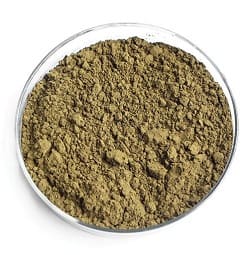Zirconium Nitride ZrN Powder
Formula | ZrN |
Synonyms | Zirconium Nitride |
Appearance | Gray Powder |
CAS number | 25658-42-8 |
Purity | 99.9% |
Density | 7.09g/cm3 |
Volume Density | 3.20g/m³ |
Melting Point | 2980℃ |
Description of Zirconium Nitride ZrN Powder
Zirconium Nitride (ZrN) powder is a hard, corrosion-resistant ceramic material known for its high melting point and excellent mechanical properties. It is often used in cutting tools, coatings, and wear-resistant applications due to its impressive hardness, low friction coefficient, and stability under high temperatures. ZrN powder also finds applications in the aerospace and electronics industries, where its thermal conductivity, electrical conductivity, and resistance to chemical corrosion are highly valued.
Zirconium Nitride powder is for sale at a competitive price.
Specification
Product | Purity (%) | Particle D50 (μm) | Impurity (ppm) | |||||||||
Al | Ca | Mg | Cu | Mn | Na | Co | Ni | Si | Pb | |||
ZrN-1 | 99.99 | <2 | 10 | 5 | 10 | 5 | 5 | 10 | 8 | 5 | 10 | 2 |
ZrN-2 | 99 | <10 | 15 | 10 | 10 | 10 | 10 | 20 | 8 | 5 | 15 | 5 |
Applications
Zirconium Nitride (ZrN) powder is used in various applications due to its exceptional hardness, wear resistance, and thermal stability. In the cutting tools industry, ZrN is commonly applied as a coating to enhance the durability and performance of tools like drills, end mills, and saw blades under high-speed and high-temperature conditions. In electronics, ZrN is utilized as a diffusion barrier and a conductive material in semiconductor devices, providing both electrical conductivity and protection against chemical corrosion. Additionally, ZrN powder is used in aerospace components and automotive parts for its ability to withstand extreme environments and resist oxidation and erosion.
Zirconium Nitride ZrN Powder Reference
- zirconium nitride nanopowders with a high specific surface area were synthesized by carbothermal nitridation with fructose as a double-function additive. The precursor was prepared by an internal gelation process. The first function of fructose was to act as an organic carbon source for the nitridation reaction to decrease the apparent activation energy. The second function of fructose was to act as a microstructural controller of products to obtain a high specific surface area of 315.7 m2/g. The effects of temperature on the phase composition, chemical elements, morphology and specific surface area were investigated. The microstructure development upon heating was illustrated and the relationship between the structure evolution and variation in the specific surface area was elucidated. This method with fructose as a water-soluble organic additive could be expanded to prepare transition metal nitrides with a high specific surface area.

